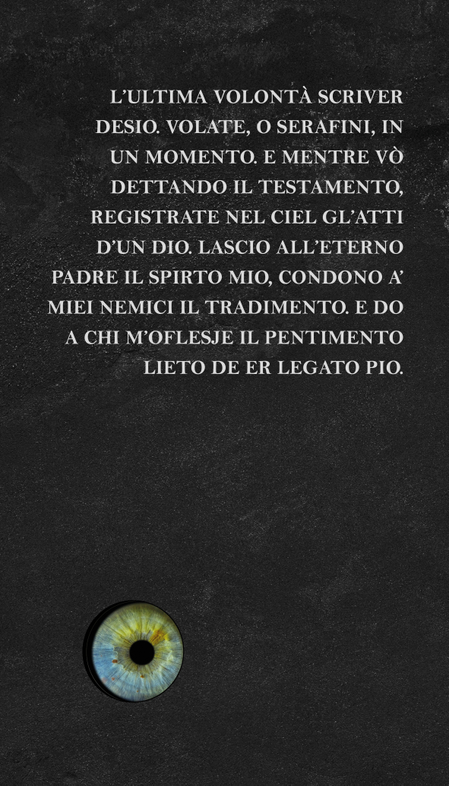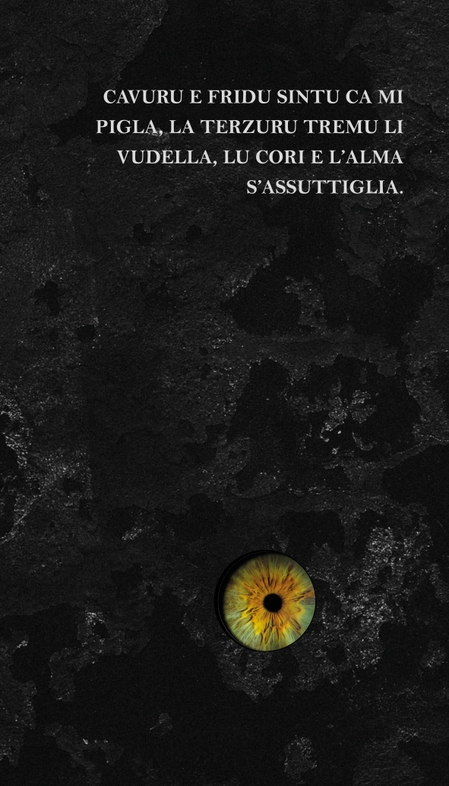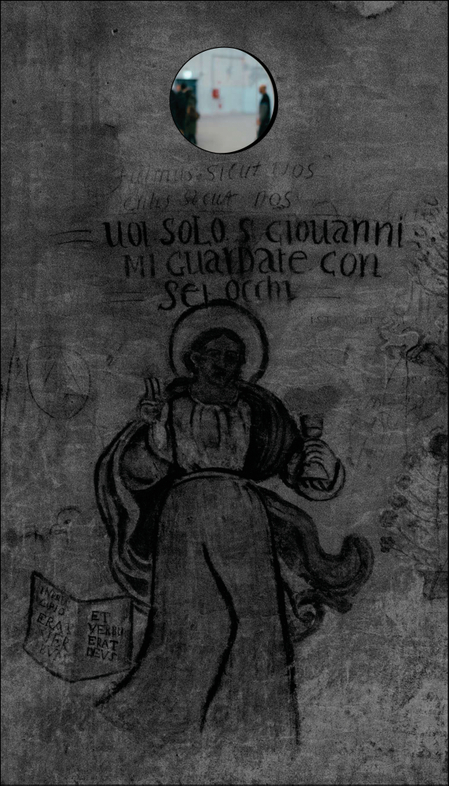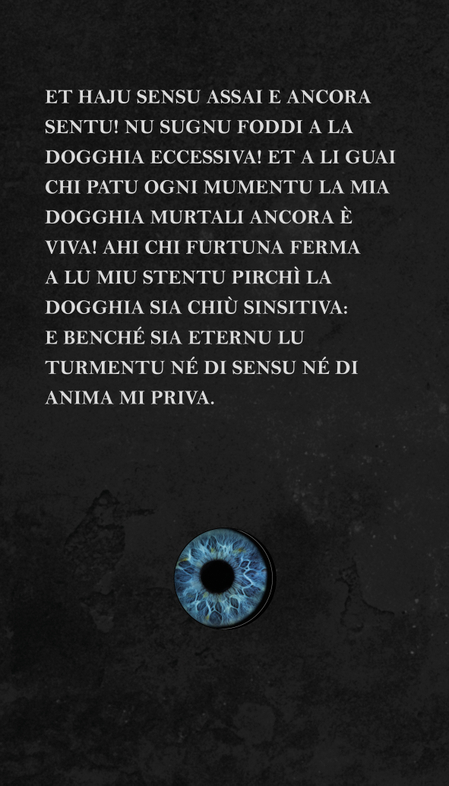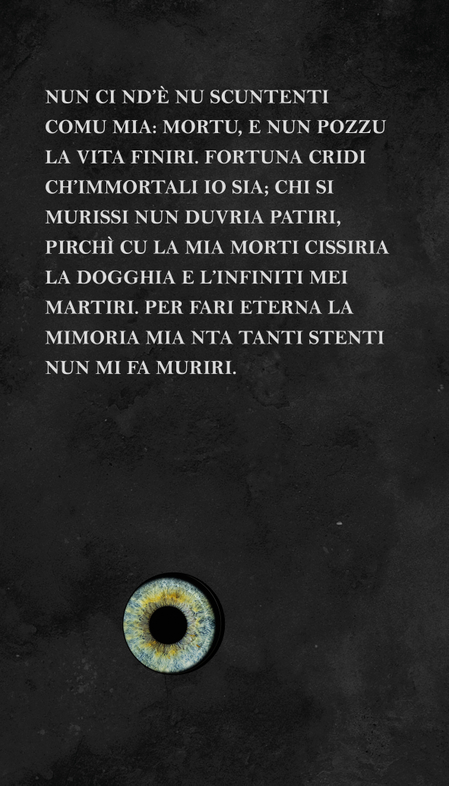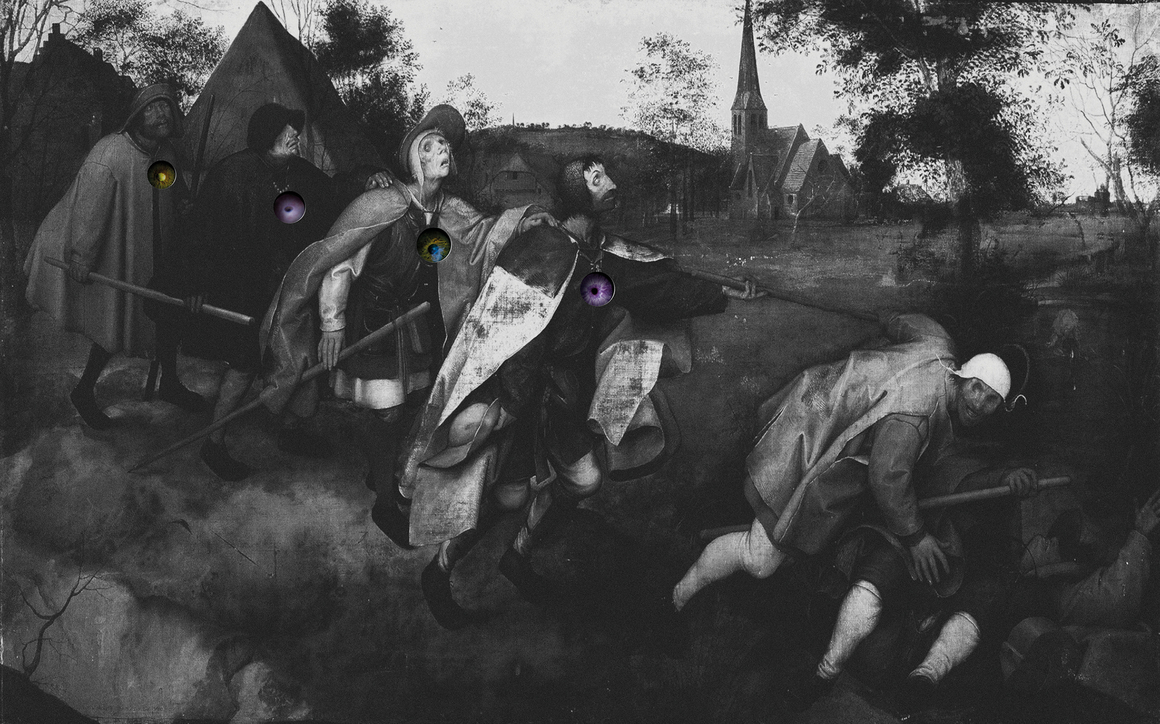
INTRO-SPECTIO (DA BRUEGEL: DE PARABEL DER BLINDEN)
2022 (II vers. 2024)
2022 (II vers. 2024)
direct print on dibond
mounting holes
mounting holes
back-printed plexiglass
cm 100x160
[...] In 2020, di Luggo launched a series of works called Intro-spectio, in which she initially used images of archeological excavations printed in grayscale, with softened contrasts. She then opened onto them a circular window that frames the color photograph of an iris. Set at a slight distance, relative to the surface of the pre-selected image, the iris becomes the catalyzing element of the entire representation.Among the images chosen by di Luggo for this series is the so-called cave of the Cumaean sibyl, a passageway distinguished by an interplay of light and darkness that has long been considered the abode of the priestess of Apollo. The oracles inspired by the god were transcribed by the prophetess on palm leaves that were then scattered by the wind, their meaning obscured. A prophecy is an alternate vision that derives from the connection with the transcendent—a vision that traditionally belongs to those who are not distracted by the world of images, those who cannot see or who take refuge in a dark cave. It is no coincidence that in the classical world the prophetic vision of the future was represented by figures who, like Tiresias, are without eyesight. Annalaura di Luggo went on to open her Intro-Spectio series to the representation of subjects throughout the history of art whose stories involve the absence of sight: blind subjects, covered faces, sculptures whose faces are worn, figures with their eyes closed. In Intro-Spectio (da Bruegel) from 2022, for instance, di Luggo placed four color irises on a black and white print of The Blind Leading the Blind by Bruegel the Elder. In Bruegel’s painting, six men— some with empty eye sockets, others with closed eyes or with no iris—walk along a steep-sided path and are connected by their arms as well as walking sticks. The first has already fallen into a ditch and the others will soon face the same fate. Bruegel’s allegory draws inspiration from the words of Jesus about the Pharisees from the Gospels of Luke and Matthew: “Can the blind lead the blind? Will they not both fall into a pit?” (Luke 6:39), “Leave them; they are blind guises. If the blind lead the blind, both will fall into a pit.” (Matthew 15:14). While the irises inserted by di Luggo on the reproduction of the work follow the same downward trajectory of the six blindmen, they become a sort of guiding light toward another dimension. [...]Demetrio Paparoni
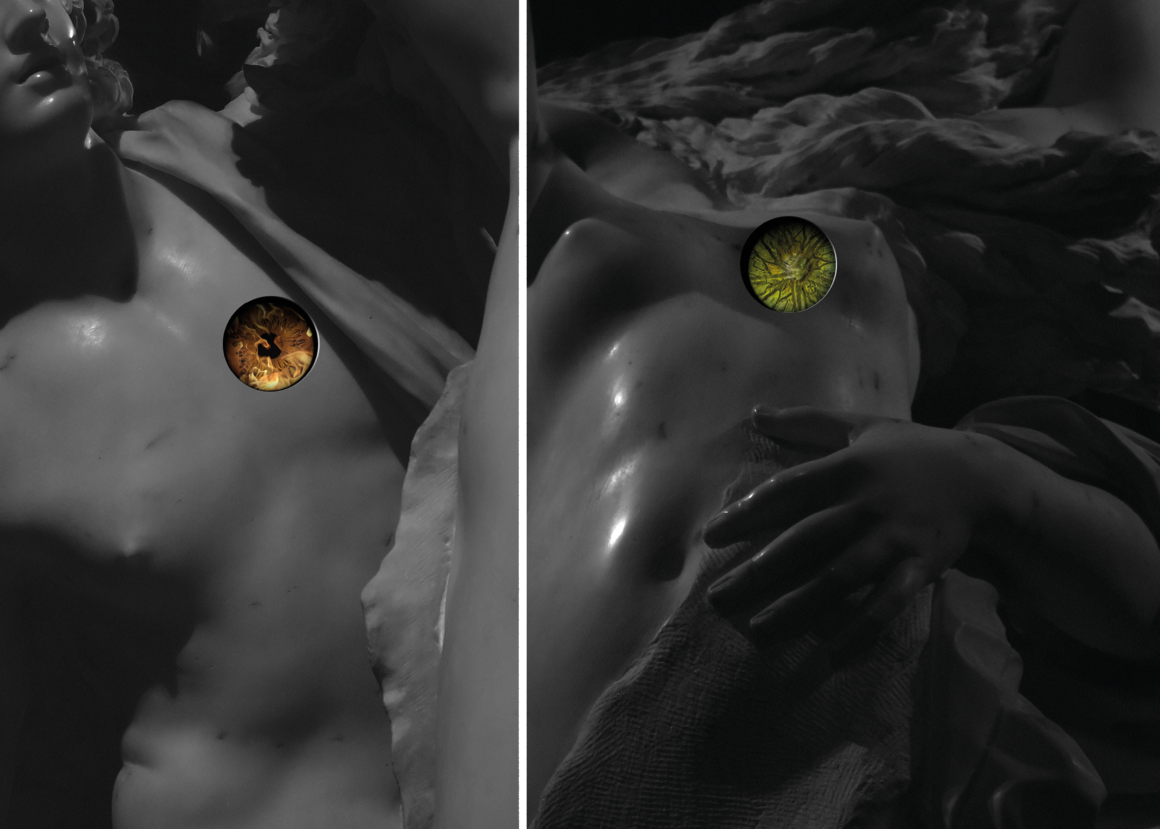


INTRO-SPECTIO (APOLLO E DAFNE, DA BERNINI)
2023 (I vers., works and frame from video)
2023 (I vers., works and frame from video)
direct print on dibond, mounting holes, video, sound, diptych
cm 105x65 + 105x80
[...] Though eyes are a recurring image in these as well as other works by the artist, di Luggo’s oeuvre does not only make reference to vision. Apollo e Dafne (2023), from the same series, tells the story of the oppression and violence the nymph attempts to escape. Through this subject, taken from a sculpture by Bernini, the artist asserts the need of women to escape from a conditionof submission, which extends to all people who suffer abuse. [...]Demetrio Paparoni
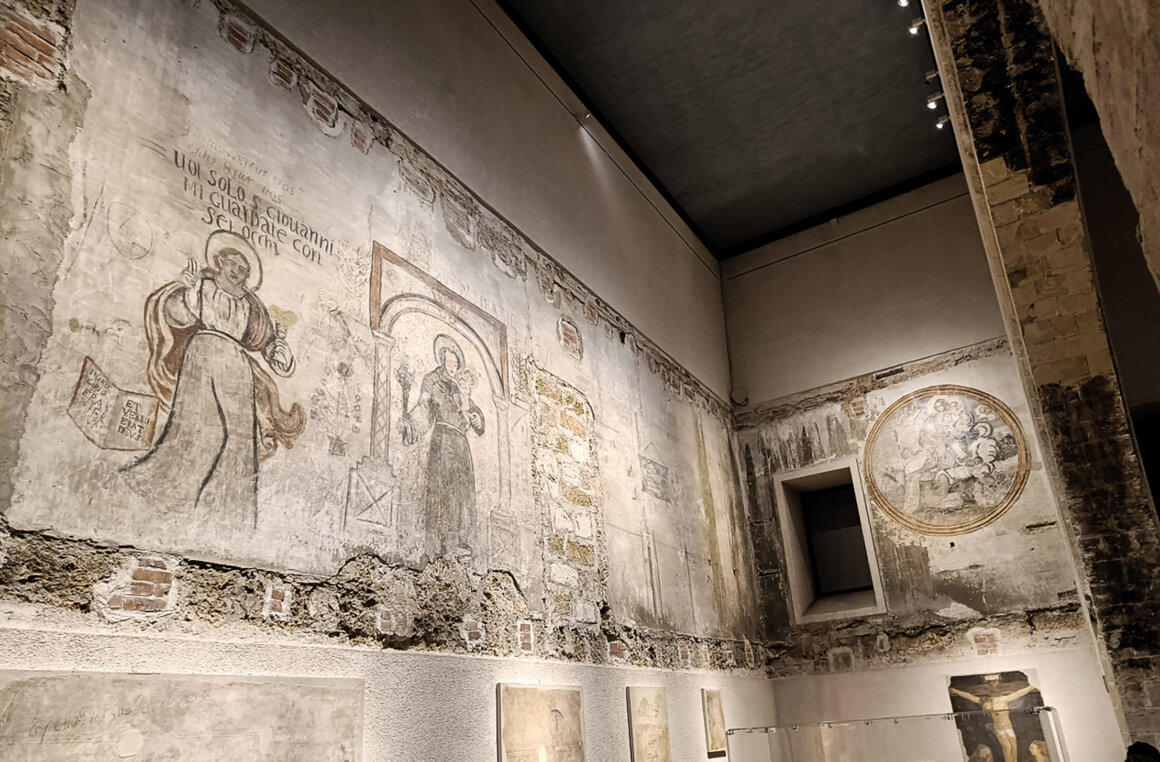
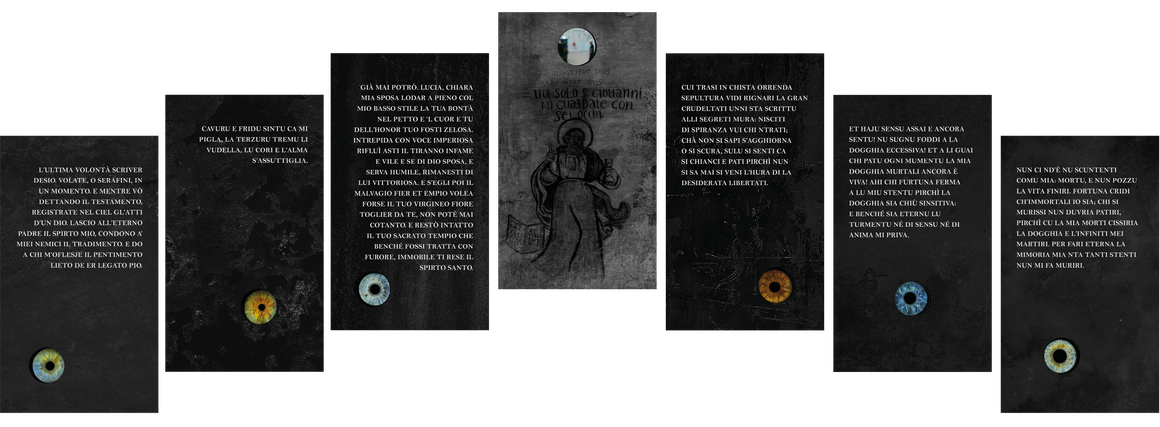
VOI SOLO SAN GIOVANNI CON SEI OCCHI MI GUARDATE
2023 (overview and individual works)
2023 (overview and individual works)
direct print on perforated dibond + back-printed plexiglas, mirror
cm 35x20 x 7 elements
[...] The first inspiration that struck Annalaura di Luggo during her mission in Palermo stemmed from the graffiti left by an Inquisition prisoner in the cells of the Sala Terrana in Palazzo Chiaromonte (the Steri). Just above the clear depiction of St. John the Evangelist (son of Zebedee and the visionary of the Apocalypse), the prisoner wrote: “You alone, St. John, watch over me with six eyes.” This phrase brushes against the halo of holiness surrounding him, blending with the graphic documents that Pitrè described as "palimpsests of the prison," a painful and haunting expression of the judicial function of that Tribunal of the Faith held at the Steri. As the anthropologist and demopsychologist Giuseppe Pitrè noted: "There is no use more obscure to us than this one." The six eyes suggest that nothing can escape the Apostle’s gaze, and that one must surrender to him with trust, as if in a practice meant to heal, to ease the torments that fester in suffering. Eye meeting eye, in a procession of sorts, like in the refined writing of the Fourth Gospel, where it is through the gaze that the very nature of reality is revealed, and how, around it, the weight of the unknown is sensed: that mysterious land once marked by ancient geographers in folios of old.Yet it is within this space—of faith and sorrow—that the practice of such navigation has already been trained in the corporeal waters of the amniotic fluid. Later, between the cornea and iris, it welcomes the final slow refractive tide of the aqueous humor in the eye’s anterior chamber, returning to us light in a blur of shadows. This is embodied in the metallic linearity of the polyptych (2023), where Annalaura engraves words, expressing the suffering of the prisoners, within the 'multiple' eye of St. John—a reflection of the fragmented dialogue shaped by the painful reach of power’s violence.. [...]Aldo Gerbino
